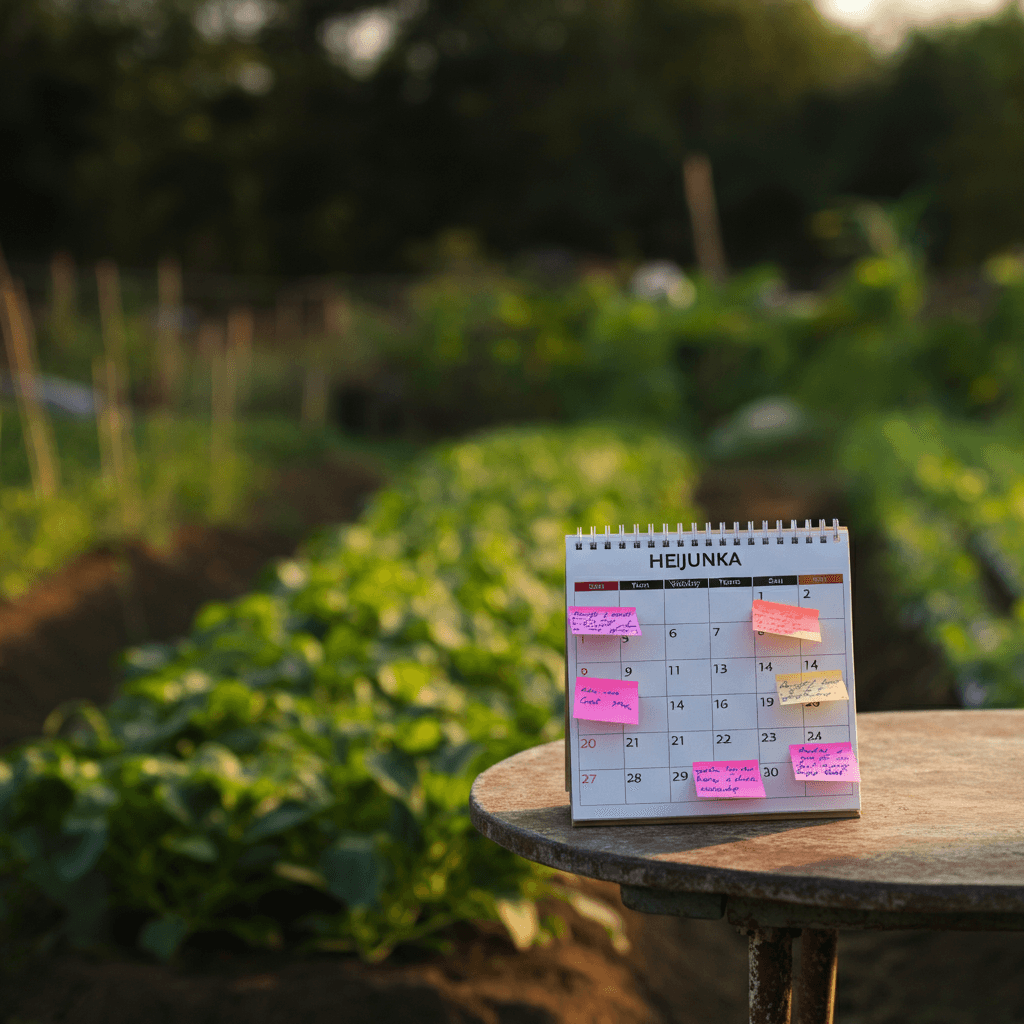Efficient garden planning is no longer just a pipe dream, thanks to the Heijunka calendar. Traditionally used in manufacturing to “level production,” this innovative tool has found its place in gardening, revolutionizing the way growers plan and execute planting schedules. It’s a system that blends organization, efficiency, and sustainability to help gardeners achieve better yields with less stress.
If you’re ready to streamline your vegetable garden planning, optimize your workflow, and keep your harvest flourishing season after season, this comprehensive guide will show you how the Heijunka calendar can transform your gardening practices.
What Is the Heijunka Calendar?
At its core, the Heijunka calendar is a method to distribute tasks evenly over time, helping balance work and reduce stress points. Originally part of the Lean manufacturing methodology, it has been adapted for gardening to map out planting, transplanting, and harvesting across the growing season.
The result? A simple, intuitive tool that helps you decide what to plant, when to plant it, and where it fits in your garden. By integrating seasonal planting, crop rotation, and succession planting strategies, the Heijunka calendar makes it easier to keep your vegetable garden thriving while eliminating waste and redundancy.
Why Use the Heijunka Calendar in Your Garden?
Planning a vegetable garden can be overwhelming. Should you transplant seedlings or direct seed? How do you ensure optimal crop rotation? This is where the Heijunka calendar excels. Here are some of the key benefits it offers to gardeners of all skill levels:
- Streamlined garden workflow: Say goodbye to random planting schedules. With the Heijunka calendar, every step is carefully planned.
- Maximize efficiency: By leveling tasks, you can avoid burnout, late planting, or rushed harvesting.
- Higher yield, less waste: Align your seed starting schedule with your garden’s capacity, ensuring every seed has a purpose.
- Effective crop rotation: Prevent soil nutrient depletion and manage pests by organizing planting patterns.
- Adaptability: The Heijunka calendar allows for adjustments based on weather, soil conditions, or unforeseen interruptions, ensuring flexibility even in unpredictable situations.
How to Use the Heijunka Calendar for Garden Planning
1. Start with a Yearly Overview
Begin by sketching out your growing season month by month. Divide each month into weekly sections. This will be the foundation of your Heijunka calendar.
Label crops as either “DS” for direct seeding or “T” for transplants, noting factors like germination times, soil temperature, and seedling hardening-off needs. For example, spinach seedlings might need to start indoors in early January, while beans can be direct-seeded in May.
2. Plan Succession Planting
To keep your garden productive all season, plan successive plantings of fast-growing crops such as radishes, lettuce, and spinach. For instance, you can seed a new round of radishes every two weeks during spring and fall.
Using the Heijunka calendar, schedule these successive plantings in advance. Mark when the previous crop will be harvested so you can slot in the next planting without gaps in productivity.
3. Optimize Crop Rotation
Crop rotation reduces pest infestations and maintains soil health by not growing the same plant family in the same spot two years in a row.
Use the calendar to track what was planted where and schedule future rotations. For example, if root vegetables like carrots grew in one section this year, consider planting nitrogen-fixing legumes, like beans or peas, in that space next year.
4. Choose Between Transplanting and Direct Seeding
Understanding when to direct seed versus transplant your crops creates profound efficiency in your garden.
- Transplanting seedlings ensure reliable germination and canopy development before weeds take hold. It’s particularly useful for crops like tomatoes, spinach, and turnips.
- Direct seeding works best for fast-germinating, large-seed crops (such as beans and corn) or cold-tolerant ones like peas.
By assigning DS or T to each crop in the Heijunka calendar, you simplify your seed starting schedule and keep track of these decisions.
5. Incorporate Seasonal Planting
The Heijunka calendar shines when optimizing seasonal variations. Mark cool-season crops like kale and broccoli for spring and fall and save heat-loving plants like tomatoes and peppers for midsummer.
Pro Tip: To make the most out of your garden, use succession planting to “farm the shoulders.” Start quick-growing lettuce or spinach early in spring, then replace them with summer crops when the temperatures rise.
6. Account for Rest and Stress Points
The brilliance of the Heijunka calendar lies in its ability to alleviate stress points. If midsummer planting leaves you exhausted, pre-plan light workloads during peak heat. Consider using this downtime to bolster long-term projects, like composting or tool maintenance.
Real-Life Heijunka Calendar Example for Vegetables
Picture this simplified Heijunka calendar for your spring vegetable garden (Week 1 of April to Week 4 of June):
| Week | Crop | Task |
|---|---|---|
| April 1 | Spinach (DS) | Prepare soil, direct seed spinach. |
| April 2 | Tomato (T) | Start seeds indoors for transplant. |
| April 4 | Radishes (DS) | Harvest first round, replant radishes. |
| May 2 | Beans (DS) | Direct seed bush beans. |
| May 3 | Kale (T) | Transplant hardened-off kale seedlings. |
| June 4 | Spinach (DS) | Pull bolted spinach, sow summer lettuce. |
By cycling each task throughout the weeks, you minimize bottlenecks and ensure steady progress.
Common Challenges (and How the Heijunka Calendar Solves Them)
- Overplanting
Solution: Use the calendar to match crops with your garden’s capacity and your family’s or customers’ needs.
- Missed Seeding Windows
Solution: Map out the exact seed-starting schedules on the Heijunka calendar to avoid missing key planting dates.
- Wasted Space and Time
Solution: Incorporate multitasking into the calendar. For example, interplant quick-growing baby greens with slower-growing tomatoes.
Final Thoughts on Mastering Garden Planning
A thriving vegetable garden is rooted in efficient planning, and the Heijunka calendar provides a clear roadmap to organize planting, save time, and maximize yield. Whether you’re new to vegetable garden planning or aiming to refine your existing workflow, the Heijunka calendar is a game changer.
Start small, take notes, and refine your system as you go. And if you’re ready to revolutionize your organic gardening practices, why not give the Heijunka calendar a try? Planning never tasted so good!





Hello.This post was really motivating, especially because I was investigating for thoughts on this subject last Wednesday.